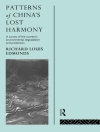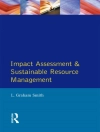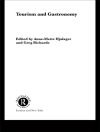All cities are vulnerable. They have economically, socially, institutionally vulnerable urban space.
In developing countries, vulnerable urban space can be observed typically as substandard informal settlements such as slums or areas occupied by squatters. At present, slum dwellers comprise one-third of the world’s urban population of 3 billion, and it has been estimated that the number of slum dwellers will double in the next 30 years if no effective action is taken. Improvement of vulnerable urban areas, which is one of the targets of Millennium Development Goals, is thus an urgent worldwide challenge in our age.
This book combines empirical and comparative analysis of improvement of vulnerable urban space and post-disaster rehabilitation in Asian and Latin American countries. The discussions presented herein will serve as a useful, thought-provoking source for researchers, practitioners and students, especially for those who are working to alleviate the vulnerability of urban space.
Jadual kandungan
Community-based Approach for Improving Vulnerable Urban Space.- The Vulnerable City: Coping with Disasters.- Promotion of Seismic Retrofitting for Existing Low Earthquake Resistant Structures: The Most Important Issue for Earthquake Disaster Reduction.- Improvement of Urban Vulnerability.- Growing Vulnerability Crisis “Will Slums Ever Reduce or Improve?”: A Case from India.- Identifying Housing Conditions in Bogota, Colombia: A Strategy to Deal with Risks.- Methodology for Intervention in Vulnerable Settlements in Medellin, Colombia: Urban Destructuralization in Relation to the Topography of the Territory.- From Wood Huts to Buildings of Seven Floors: An Analysis of the Process of Housing Production in the Slum of Rocinha in Rio de Janeiro, Brazil, over a Fifty-Year Period.- The Incremental Improvement of the Area Densely Built-up with Old Wooden Houses in Tokyo.- Thailand Urban Environmental Management: Case of Environmental infrastructure and housing provision in Bangkok Metropolitan Region.- Management of Natural Disasters.- Seismic Vulnerability of Peruvian Houses: Current Issues and Solution Attempts.- Improving vulnerable urban space in post-disaster in yogyakarta and central java, indonesia: participatory and comprehensive approach.- Community Empowerment Program on the Revitalization of Kotagede Heritage District, Indonesia Post Earthquake.- A review of the 921 post-earthquake community rehabilitation of the urban disaster area in taiwan.- Earthquake as a Fact of Istanbul: Risk-based Strategy and an Action Plan for the Vulnerable Zeytinburnu Area.- Structural Viewpoint.- Vulnerability to Earthquake Disaster and Countermeasures in Tokyo.












